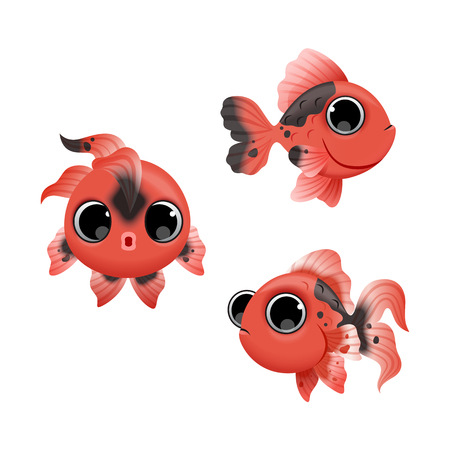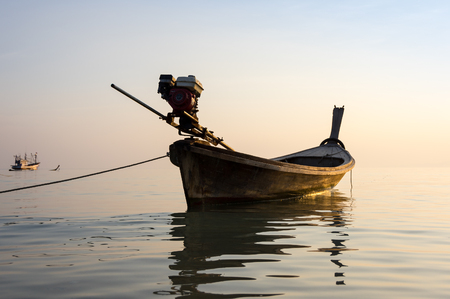1. Roots of Baitcasting: Early Innovations in American Fishing
Baitcasting has come a long way in the United States, but its story starts with humble beginnings. Long before today’s high-tech reels and carbon fiber rods, American anglers relied on handcrafted gear made with simple tools and materials. Back in the 1800s, fishing was as much about craftsmanship as it was about sport.
The Birth of Baitcasting Reels
The earliest baitcasting reels in America were handmade by skilled artisans, often using brass or iron. These reels didn’t have modern features like anti-backlash systems or smooth drag adjustments. Instead, they were simple winches that required real skill to use effectively. Anglers had to rely on thumb pressure to control the spool, making casting a true art form.
Fishing Along America’s Rivers and Lakes
During the 19th century, baitcasting started gaining popularity among freshwater anglers across the U.S., especially in regions near rivers and lakes like the Ohio River Valley and the Great Lakes. Fishermen targeted species like bass and pike using wooden rods paired with those early reels. The gear may have been basic, but it laid the foundation for generations of innovation.
Common Materials Used in Early Gear
| Component | Material |
|---|---|
| Reel Frame | Brass, Iron |
| Spool | Cork, Wood |
| Rod | Ash, Hickory, Bamboo |
| Line | Linen Thread or Horsehair |
Pioneering Brands and Makers
Some of the first American reel makers began setting up shop in the mid-1800s. Companies like Meek & Milam out of Kentucky became known for producing high-quality baitcasting reels. These early innovators played a big role in making baitcasting more accessible and reliable for everyday fishermen.
Did You Know?
The first patented American multiplying reel was granted in 1820—this style allowed for faster line retrieval and would become a hallmark of baitcasting design.
2. Post-War Boom and the Birth of Modern Baitcasting Reels
After World War II, the United States experienced a surge in innovation and manufacturing power. This boom wasnt just about cars and appliances—it also had a huge impact on outdoor recreation, especially fishing. With a growing middle class, increased leisure time, and a love for the great outdoors, more Americans than ever before were hitting lakes, rivers, and coastlines with a rod and reel in hand.
The Rise of American Manufacturing in Fishing Gear
Post-war factories that once produced military equipment shifted their focus to consumer goods. For anglers, this meant better access to quality gear made right here in the USA. Companies like Abu Garcia (originally from Sweden but with major U.S. distribution), Pflueger, and Shakespeare began mass-producing baitcasting reels that were more durable, precise, and affordable than ever before.
Key Improvements in Baitcasting Reels During the Post-War Era
| Feature | Pre-War Reels | Post-War Reels |
|---|---|---|
| Materials Used | Brass & basic metals | Aluminum alloys & stainless steel |
| Gear Mechanism | Simpler gears | Smoother, multi-gear systems |
| Bearing Systems | No or minimal bearings | Ball-bearing systems for smoother casting |
| Drag Control | Manual tension control only | Adjustable star drags introduced |
Cultural Factors Driving Innovation
The American spirit of innovation combined with a deep-rooted love for outdoor sports created the perfect storm for baitcasting gear evolution. Fishing became more than just putting food on the table—it was a recreational hobby, a family tradition, and even a competitive sport. As weekend warriors took to local lakes and bass tournaments gained popularity, anglers demanded reels that could handle bigger fish with better precision.
A New Era of Accessibility
The affordability of modern baitcasting reels made them accessible to everyday Americans. You no longer had to be a seasoned pro or have deep pockets to enjoy quality gear. This democratization of fishing equipment helped shape America’s angling identity throughout the 1950s and beyond.

3. Technological Advancements: From Brass Gears to Carbon Fiber
Over the decades, baitcasting gear has gone through a remarkable transformation. From the early days of heavy brass components to today’s ultra-lightweight carbon fiber frames, these changes didn’t happen overnight. They reflect a deep-rooted American passion for innovation, performance, and precision in angling. Let’s explore some of the most important technological milestones that have shaped modern baitcasting gear.
Braking Systems: More Control, Less Backlash
One of the biggest game-changers in baitcasting reels has been the evolution of braking systems. Early reels lacked any sort of braking mechanism, making them tough to master—especially for beginners. Over time, manufacturers introduced better ways to reduce backlash and improve casting accuracy.
| Braking System | Era | Main Benefit |
|---|---|---|
| Centrifugal Brakes | 1970s–1980s | Used spinning weights to slow down spool rotation during casting |
| Magnetic Brakes | 1990s–2000s | Offered external adjustment and consistent resistance for smoother casts |
| Digital Braking Systems (DC) | 2010s–Present | Electronically managed spool speed for maximum control and minimal backlash |
Spool Design: Lighter and Faster
The spool is the heart of a baitcasting reel, and its design has seen dramatic improvements. Earlier spools were made from heavy metals that limited casting distance and speed. Today’s spools are lighter, stronger, and engineered for high-speed performance.
- Shallow Spools: Great for finesse fishing with lighter lines.
- Deep Spools: Ideal for targeting bigger fish with heavier line.
- Skeletonized Spools: Reduce weight while maintaining strength, allowing faster startup speeds during casts.
Materials: Strength Meets Lightweight Innovation
The materials used in baitcasting reels have evolved alongside advancements in aerospace and automotive industries. Anglers now benefit from reels that are both durable and feather-light, making long days on the water easier on the wrists without sacrificing performance.
| Material | Common Use in Reels | Main Advantage |
|---|---|---|
| Brass | Gears & Frames (early models) | Tough but heavy; resistant to corrosion |
| Aluminum | Bodies & Spools (modern era) | Lightweight yet strong; good balance of cost and durability |
| Carbon Fiber | Bodies & Side Plates (high-end models) | Ultra-lightweight with excellent rigidity; reduces overall reel weight significantly |
| Titanium Alloys | Shafts & Handles (premium models) | Adds strength without extra weight; corrosion-resistant in saltwater environments |
The American Influence on Innovation
The U.S. fishing industry has played a huge role in pushing these technologies forward. Brands like Abu Garcia (originally Swedish but heavily American-influenced), Lew’s, and Shimano USA responded to angler demand by investing in R&D tailored specifically for American waters—from freshwater bass lakes to coastal redfish flats.
User-Friendly Features for Everyday Anglers
- Palmable low-profile designs for comfort during long fishing sessions.
- Tunable cast control knobs customized for lure type and weight.
- Smooth drag systems that protect light lines while battling strong fish.
This steady stream of innovations has helped make baitcasting gear more accessible than ever before—whether you’re flipping jigs into heavy cover or bombing crankbaits across open water.
4. The Rise of Bass Fishing and Its Influence on Gear Design
In the world of American angling, few things have had as big an impact on baitcasting gear as the rise of competitive bass fishing. Starting in the 1960s and exploding in popularity throughout the 70s and 80s, bass tournaments pushed both anglers and manufacturers to innovate. The need for speed, accuracy, and versatility drove rapid advancements in baitcasting reels, rods, and line technology.
The Birth of Tournament Bass Fishing
When Ray Scott launched the first Bassmaster tournament in 1967, he unknowingly set off a revolution. Competitive bass fishing quickly became a national pastime, with televised events drawing large audiences. As more anglers chased trophies and prize money, they demanded gear that could perform under pressure.
Performance Expectations from Tournament Anglers
Unlike casual weekend fishing, tournament bass fishing requires gear that delivers fast casts, precise lure control, and the strength to pull big fish out of heavy cover. This shift led to significant changes in baitcasting tackle:
| Feature | Pre-Tournament Era | Tournament-Driven Innovation |
|---|---|---|
| Reel Speed (Gear Ratio) | Low (4:1 or less) | High-speed (6:1 to 8:1+) |
| Braking Systems | Simple centrifugal systems | Advanced magnetic & digital controls |
| Rod Materials | Fiberglass | Graphite composites for sensitivity & strength |
| Line Technology | Monofilament only | Braided & fluorocarbon options |
| Lure Weight Range | Narrow range supported | Broad range with technique-specific setups |
The Role of Professional Anglers and Sponsors
Sponsorships from major brands like Shimano, Abu Garcia, and Lew’s helped fund professional anglers who then worked closely with engineers to create gear tailored to real-world needs. As a result, many innovations—such as low-profile reels and adjustable casting brakes—were born from feedback directly from the tournament trail.
Tournament Trends That Shaped Gear Design:
- Flipping & Pitching: Required shorter rods with strong backbones and high-torque reels.
- Topwater Techniques: Called for fast-retrieve reels to keep up with aggressive strikes.
- Deep Cranking: Led to the development of slower gear ratios for more torque and control.
- Punching Heavy Cover: Necessitated stronger drag systems and braided lines.
A Lasting Impact on Everyday Anglers
The trickle-down effect from tournament innovation means even weekend anglers benefit today. Modern baitcasting setups are lighter, smoother, and more efficient than ever before—all thanks to the demands of competitive bass fishing pushing gear design forward.
5. Today’s Baitcasting Culture: Style, Performance, and Personalization
Modern American anglers see baitcasting gear as more than just fishing tools—theyre an extension of personal style, a symbol of brand loyalty, and a way to enhance on-the-water performance. Today’s baitcasting culture is defined by innovation, individuality, and a growing community of passionate users who demand more from their equipment.
Performance Comes First
Today’s baitcasting reels are engineered for precision, power, and smooth operation. Anglers expect features like magnetic or centrifugal braking systems, high gear ratios for fast retrieves, lightweight frames made from carbon or aluminum, and ultra-smooth drag systems. These features help anglers make longer casts, feel subtle bites, and control big fish with confidence.
| Feature | Why It Matters |
|---|---|
| High Gear Ratios (7.1:1+) | Faster line retrieval for techniques like flipping and pitching |
| Lightweight Materials | Less fatigue during all-day casting sessions |
| Smooth Drag Systems | Better control when fighting strong fish |
| Tuned Braking Systems | Minimizes backlash while maximizing casting distance |
The Rise of Brand Loyalty
Baitcasting in America has become closely tied to brand identity. Brands like Shimano, Daiwa, Abu Garcia, Lews, and 13 Fishing each have loyal followings. Anglers often stick with one brand across their rods, reels, and even apparel. This loyalty comes from trust in quality and the unique feel that each brand offers. For many bass anglers especially, choosing a brand is as personal as choosing a truck.
Popular U.S. Baitcasting Brands
- Shimano: Known for smooth performance and durability
- Daiwa: Innovative braking systems and sleek design
- Lews: Budget-friendly options with pro-level features
- Abu Garcia: A long-standing favorite among tournament anglers
The Custom Gear Movement
A big part of today’s baitcasting culture is personalization. Anglers are customizing everything—from reel knobs and handles to spool bearings and rod wraps. This movement blends performance upgrades with visual flair. Some do it to get an edge on the water; others do it to stand out at tournaments or on social media.
Common Customizations
- Ceramic bearings for increased casting distance
- Anodized reel parts in custom colors
- Cork or EVA handle grips for comfort and control
- Name engravings or decals for personalization
This DIY spirit reflects the American angler’s desire to make their gear truly their own—both in look and function.


